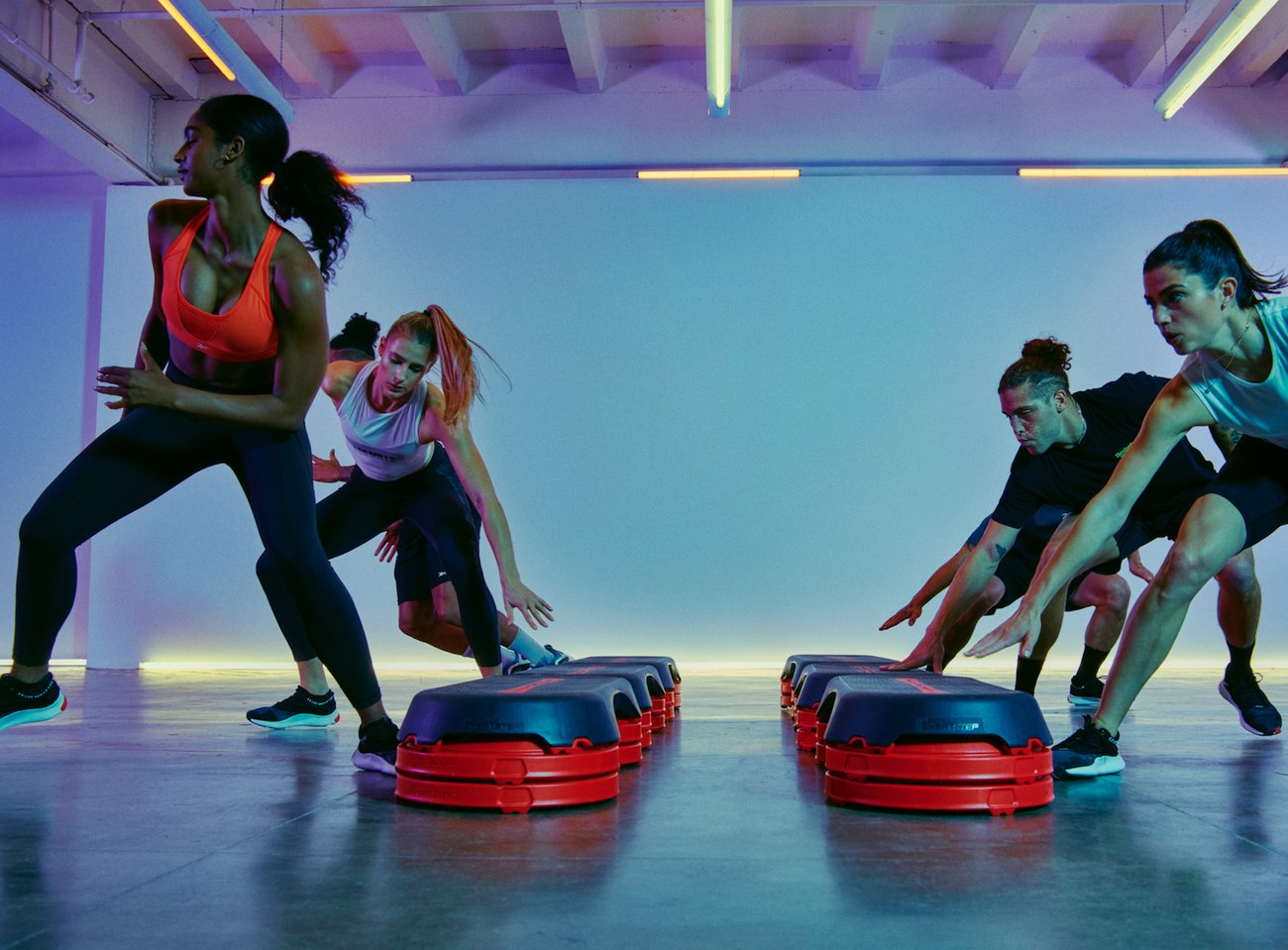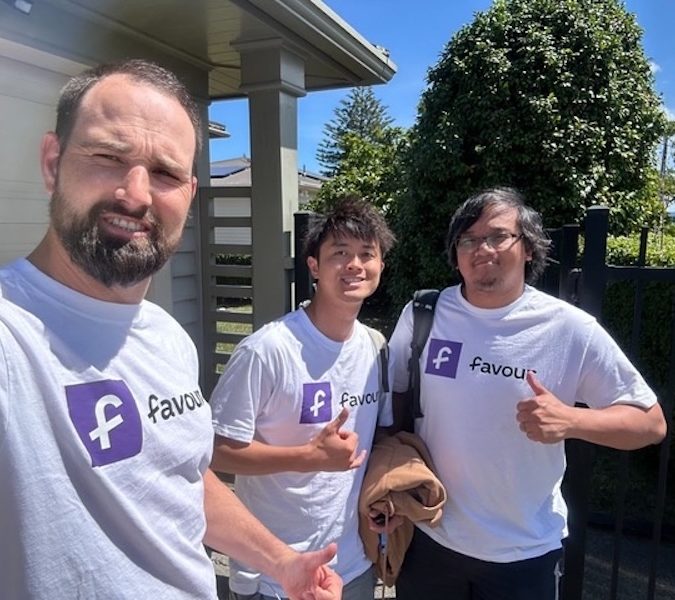Fighting for a fitter planet: Les Mills CEO Clive Ormerod on taking its New Zealand brand of fit-tech to the world

The survival of a 52-year-old fitness brand in the digital era is no small feat. But take one look at Les Mills’ combination of in-person, instructor-led fitness classes, at-home workouts and influence in other fitness chains with its virtual classes, and it’s clear the company is adapting to technological change and perhaps, even leading the charge. The company’s new CEO, Clive Ormerod, talks why in-person experiences are more important than ever, the limits of technology, taking on a family legacy and where he envisages the future of fitness going.
Wellness has been a word on the tip of the tongue for many businesses, from discussions around mental health in the workplace, through to companies recognising the importance of group exercise for boosting employee health, engagement and productivity, to ‘sweatworking’ where teams bond through exercise.
For Les Mills, this conversation goes broader – it’s integral to its entire ethos, which is to create a fitter planet beyond the four walls of its head office.
Les Mills started as a fitness club in 1968 and has since grown to 12 clubs nationwide, with more than 60,000 members in New Zealand. It has also gone global: there are more 140,000 certified instructors teaching its workouts in various fitness chains across the world, and around 700 people employed by Les Mill International.

Ormerod says it’s the most purpose-led organisation he’s ever been a part of.
“Our mission statement is to create a fitter planet. If you start with that, everything that comes off that has the potential to make a positive impact on the world,” he says.
“I think that’s what has helped Les Mills stand the test of time and helped us anchor around lots of things that have come and gone over the years – it’s because we have a really meaningful existence.”
Clive Ormerod was welcomed in as CEO in July, stepping up from his role as the company’s chief marketing officer. He was the first person to take on this position since founder Phillip Mills, whose father, four-time Olympian Les Mills, is the brand’s namesake that founded the first gym.

With a family legacy riding on his shoulders, it might have been enough to make anyone else sweat. But Ormerod’s experience working overseas at another iconic fitness brand – Nike – and at Spark, future-proofing New Zealanders on all things tech, means he’s well placed for steering the ship.
He might have also had another advantage under his belt with the company’s longevity. While countless new flashy fitness health clubs and apps have entered the market, Les Mills traces its history back to the 1960s.
Research says that the average life expectancy of a publicly-listed company is 10 years before it’s acquired, goes bankrupt or is merged with another business. This makes Les Mills’ evolution and growth unique, particularly in a modern world that has a shrinking attention span, fickle consumers and a relentlessly fast-paced media cycle.
“It’s awesome working in a business like Les Mills or Nike that has that history,” Ormerod says.
“It’s an advantage and also an opportunity. You’ve got history and heritage and you’ve got something to talk to about why you exist and how you’ve evolved over time, but you’ve also got to stay relevant. Newcomers come into the market literally every day. But for us, we have something really authentic to build on: a business and a platform with group fitness at its core.”
This history is also a testament to group fitness not being a recent innovation, having been around for decades. However, working out has taken on an increased relevance in the 2000s. In the face of many people experiencing increasing loneliness, depression and isolation due to technology, there is a renewed focus on spaces that provide a social environment and a community feel, like a gym.
This also means big business. According to the Global Wellness Institute, the fitness and mind-body market was worth US$595 billion in 2018, while gyms have experienced a 50 percent increase in revenue in the past decade.
Ormerod compares the popularity of in-person fitness classes to the boom happening with festivals and concerts in present day, in spite of streaming changing the way people consume music.
He says the anxiety that a rise in digital fitness – like the at-home virtual classes Les Mills has added to its offering – will take people out of “live” gym experiences is unneeded.
“If anything, technology has helped the music industry grow and we see fitness being exactly the same,” he says. “The in-person experience will absolutely play a big part in a future that’s digitally enabled. We love and crave for that personal interaction – it makes us human.
“The challenge to stay relevant when there’s massive fragmentation where people are working out. So, we think about how we help our customers stay fit and stay healthy in and around their life, rather than them having to think, ‘I have to go to the gym to work out.’”
This diversification hasn’t stopped at just classes, either. Les Mills has collaborated on a clothing line with Reebok and has recently teamed up with meal kit service My Food Bag to create an eight-week challenge that offers workout plans, nutrition guidance, meditations and a discount on the company’s new high protein meal kit, Fresh Start Fit.


This, as well as its moves more into the digital space, are being driven by millennials and generation Z. A 2019 Les Mills Global Consumer Fitness Survey found these digital natives now make up 80 percent of their market, and favour savvy integration of technology and a broad choice of work-out options.
Ormerod refers to them as “generation active”, and says they are why Les Mills continues to innovate and push the gym experience by marrying fitness with technology seamlessly.
He points to The Trip, an immersive ‘exertainment’ workout experience where users watch a cinema-scale screen and journey through digitally created worlds, as a great example of this.
“When we introduced the trip many years ago, there was nothing of its kind. Now there are quite a lot of people trying to compete in that space,” Ormerod says.
“You have an innovative fitness experience that is delivered to you on a screen. That’s creativity. And that doesn’t just have to be on a bike, so we’re looking at how that might span across other products or transcend the gym experience and turn up in your living room.”
Les Mills Media CEO Jean-Michel Fournier recently talked of further extensions of this being a dance workout set to the backdrop of a cheering crowd, or a yoga class surrounded by screens showing a beautiful vista.
“It’s about how you make that experience better because of the technology you wrap around it, whether that be gamification, new, immersive products, or ways to make fitness more personal and relevant to you, like using AI to help coach you and lead you through your workout,” Ormerod says.

Elsewhere in the globe, indoor cycling company SoulCycle has recently held classes that are accompanied by live concerts from a host of up-and-coming music acts. It also invested in a 20-person strong media division devoted to delivering marketing content that complements the studio experience and adds new revenue streams.
It’s clear content is becoming king, but could Ormerod ever see an AR or VR headset getting involved in the workout?
“You know, I think for me a bigger and better bet is artificial intelligence and machine learning, and how it will impact the fitness experience,” he says. “I think virtual reality is going to play a role in some regard, but it might be more on screen versus wearables, thinking about the practicalities of having a VR headset available for people to use in a fitness experience where people sweat in it.”
Les Mills Media CEO Jean-Michel Fournier also described a reality where holograms of people’s favourite fitness instructors could become on-demand and able to appear where-ever the user wants via an AR headset, in whatever language necessary.
But exciting technology aside, Ormerod says Les Mills’ core business is group workouts and everything that wraps around this experience. This is why it invests heavily in upskilling its instructors, and also why it invests heavily in producing high-quality content.


“At the core of our business, we’re a content business,” Ormerod says. “We produce new content every quarter and we use sound design, set design and think about the music because if the core product of five-star content is great, then we have a really strong advantage because as a customer, you have new experiences regularly.”
He says it all comes down to how you make people feel as a result of having engaged with your business.
“That might be solving things in their lives that they are struggling with today, or helping people best prepare to take on the world or what life throws at them,” Ormerod says. “If you can give them an amazing experience as a brand, you’re going to have longevity. Here at Les Mills, we’re playing in a really positive, purposeful space.”
And the big, audacious goal? To make Les Mills a top ten global fitness brand. From humble beginnings in Auckland in the 1960s, to a leader in group fitness and technology, it might just get there.





